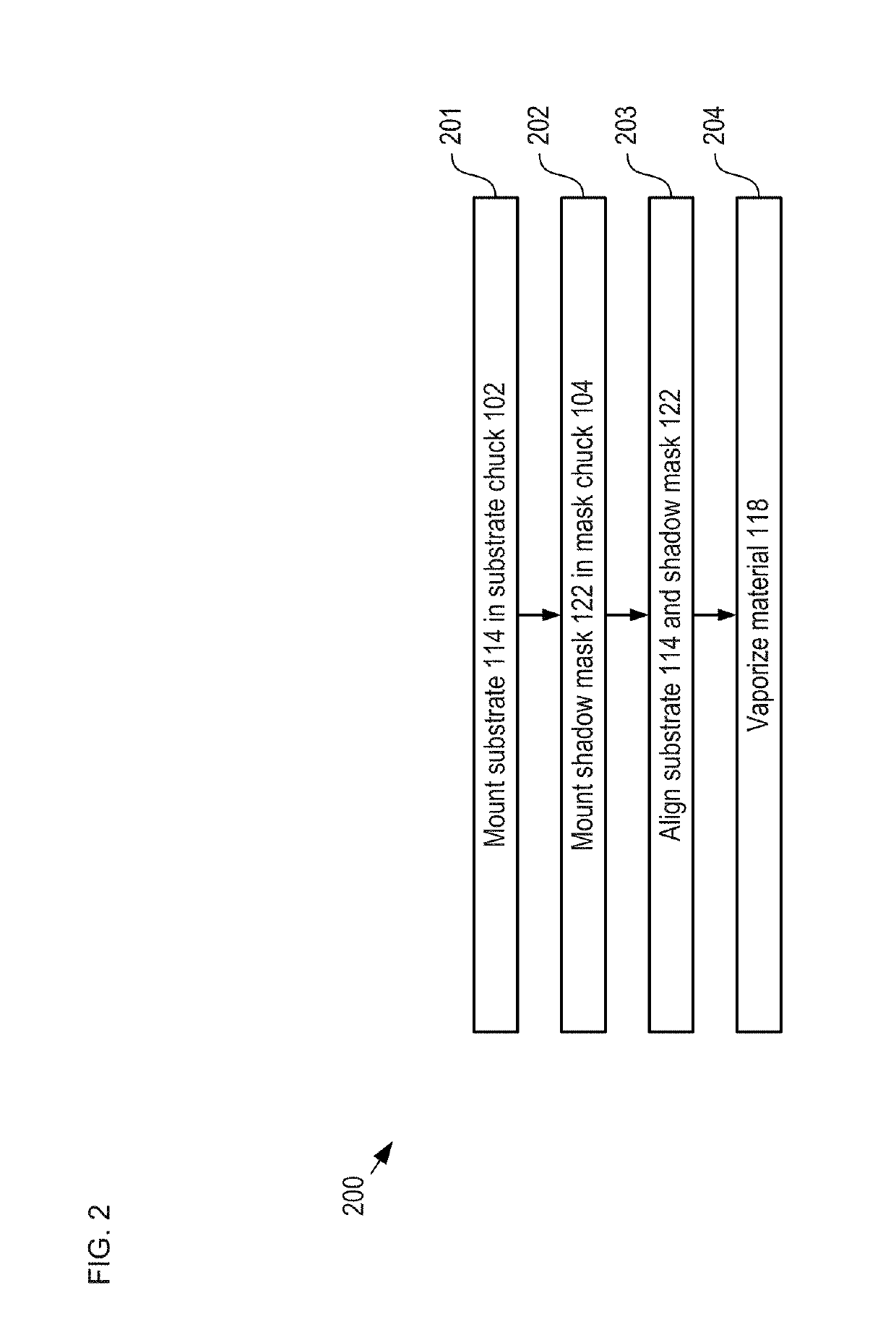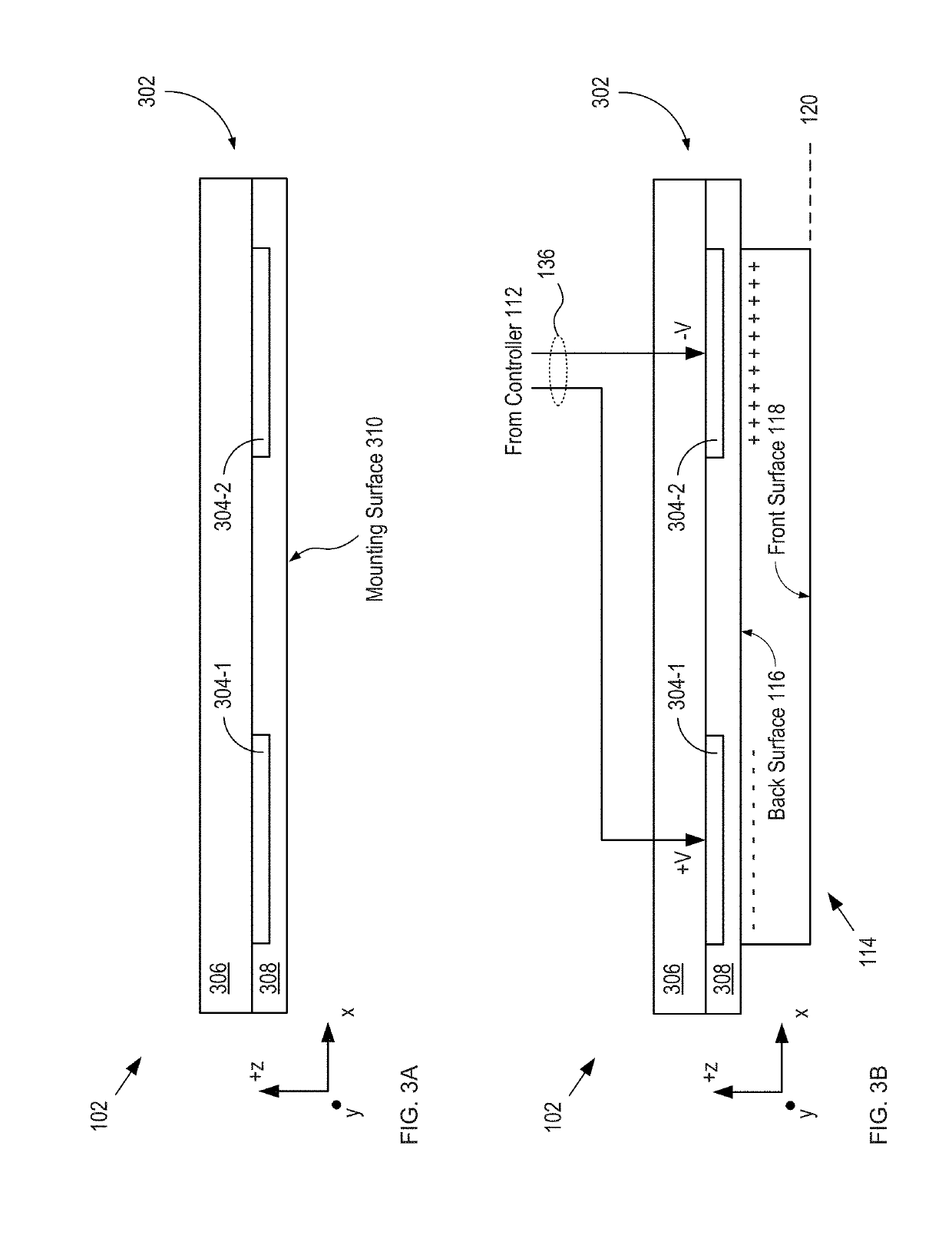Shadow-mask-deposition system and method therefor
a shadow-mask and deposition system technology, applied in the field of thin film deposition, can solve the problems of reducing the feature resolution that can be obtained by conventional shadow-mask deposition, increasing “fauna” and many materials cannot be subjected to photolithographic chemicals without damag
- Summary
- Abstract
- Description
- Claims
- Application Information
AI Technical Summary
Benefits of technology
Problems solved by technology
Method used
Image
Examples
Embodiment Construction
[0029]FIG. 9 depicts a schematic drawing of the salient features of a high-precision, direct-patterning deposition system in accordance with a fourth alternative embodiment of the present invention.
[0030]System 100 is described herein with respect to the deposition of a pattern of light-emitting organic material on a glass substrate as part of the fabrication of an AMOLED display. However, it will be clear to one skilled in the art, after reading this Specification, that the present invention can be directed toward the formation of directly patterned layers of virtually any thin- and thick-film material (organic or inorganic) on any of a wide range of substrates, such as semiconductor substrates (e.g., silicon, silicon carbide, germanium, etc.), ceramic substrates, metal substrates, plastic substrates, and the like. Further, although the illustrative embodiment is a thermal evaporation system, one skilled in the art will recognize, after reading this Specification, that the present ...
PUM
| Property | Measurement | Unit |
|---|---|---|
| thickness | aaaaa | aaaaa |
| thickness | aaaaa | aaaaa |
| distance | aaaaa | aaaaa |
Abstract
Description
Claims
Application Information
 Login to View More
Login to View More - R&D
- Intellectual Property
- Life Sciences
- Materials
- Tech Scout
- Unparalleled Data Quality
- Higher Quality Content
- 60% Fewer Hallucinations
Browse by: Latest US Patents, China's latest patents, Technical Efficacy Thesaurus, Application Domain, Technology Topic, Popular Technical Reports.
© 2025 PatSnap. All rights reserved.Legal|Privacy policy|Modern Slavery Act Transparency Statement|Sitemap|About US| Contact US: help@patsnap.com



